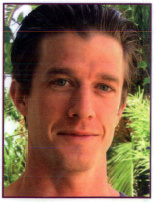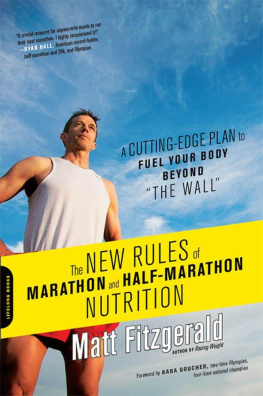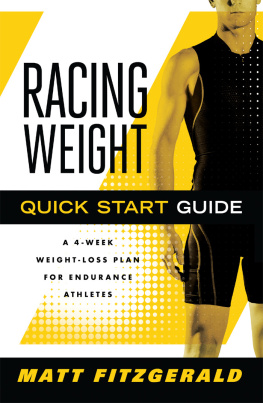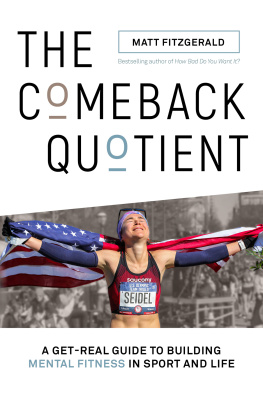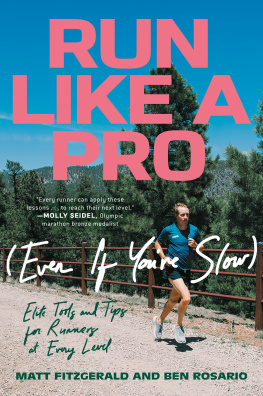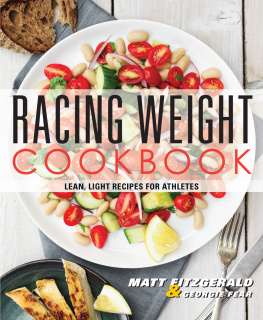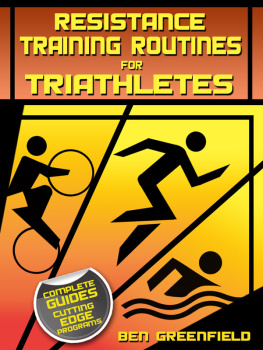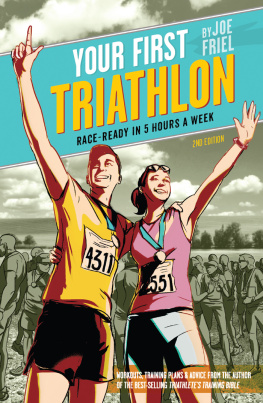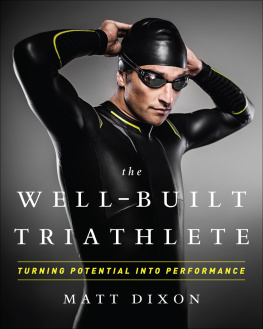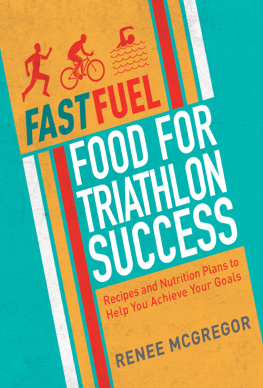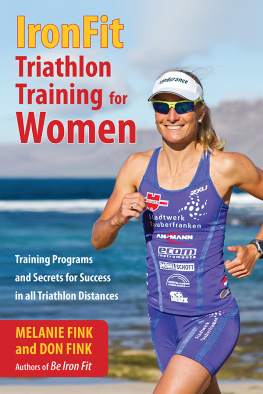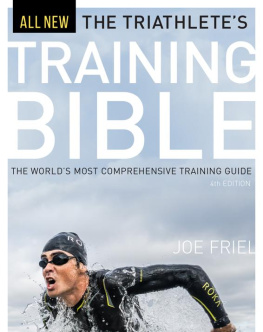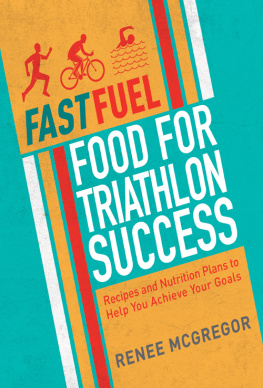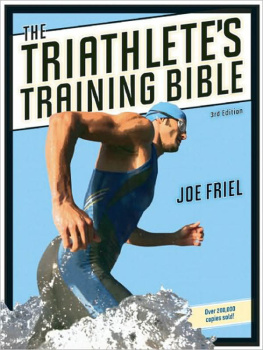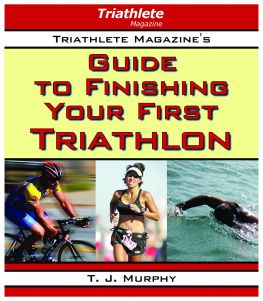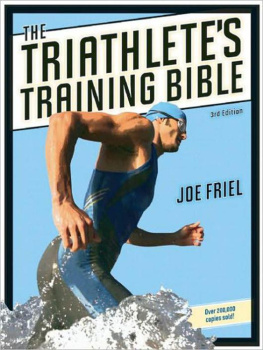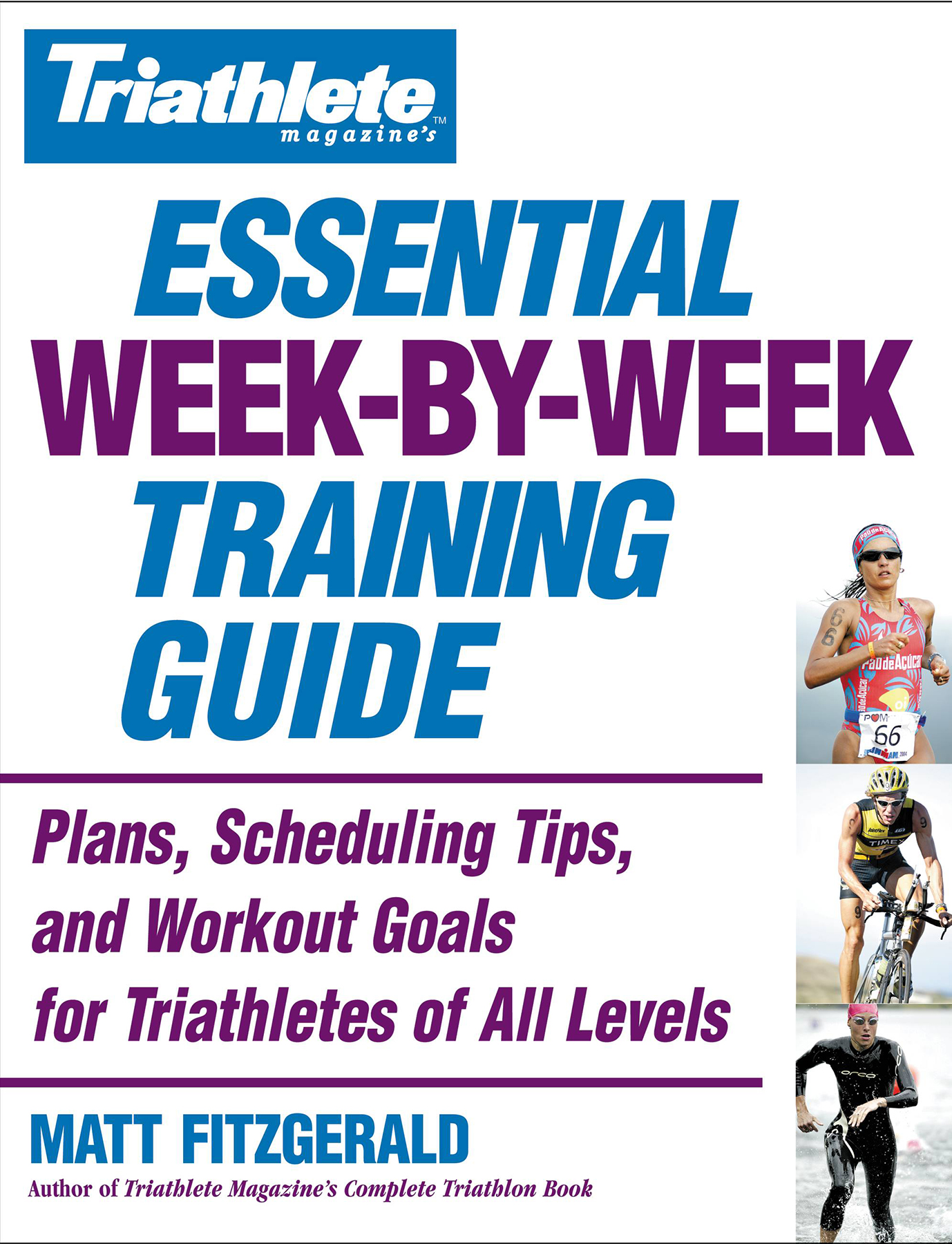Neither this wellness program nor any other wellness program should be followed without first consulting a health care professional.If you have any special conditions requiring attention, you should consult with your health care professional regularly regardingpossible modification of the program contained in this book.
Copyright 2006 by Triathlete Magazine
Hachette Book Group supports the right to free expression and the value of copyright. The purpose of copyright is to encourage writers and artists to produce the creative works that enrich our culture.
The scanning, uploading, and distribution of this book without permission is a theft of the authors intellectual property. If you would like permission to use material from the book (other than for review purposes), please contact permissions@hbgusa.com. Thank you for your support of the authors rights.
Grand Central Publishing
Hachette Book Group
1290 Avenue of the Americas, New York, NY 10104
grandcentralpublishing.com
twitter.com/grandcentralpub
Originally published in April 2006 by Grand Central Life & Style, an imprint of Grand Central Publishing
First Grand Central Publishing edition: February 2019
Grand Central Publishing is a division of Hachette Book Group, Inc. The Grand Central Publishing name and logo is a trademark of Hachette Book Group, Inc.
Library of Congres Cataloging-in-Publication Data
Fitzgerald, Matt.
Triathlete magazines essential week-by-week training guide : plans, scheduling tips, and workout goals for triathletes of all levels / Matt Fitzgerald. 1st ed.
p. cm.
ISBN: 978-0-446-69676-0
1. TriathlonTraining. I. Title: Essential week-by-week training guide. II. Triathlete. III. Title.
GV1060.73.F583 2006
796.42'57dc22
2005029233
Exercise photos by John Segesta
Book design and text composition by Ellen Gleeson
ISBNs: 978-0-446-69676-0 (trade paperback), 978-0-446-56878-4 (ebook)
E3-20190125-JV-PC-COR
for my mother and father
I would like to express my deepest gratitude to the many people whose help and support made this book possible and better than it otherwise would have been. Most especially, I wish to thank Hunter Allen, Mark Allen, Dan Ambrosio, John Duke, Sally Edwards, Gear Fisher, Joe Friel, Christina Gandolfo, Paul Goldberg, Donavon Guyot, Rachel Joyce, Fernanda Keller, Michael Lovato, T. J. Murphy, Tim Noakes, Andrea Pedolsky, Lindsay Peters, Robert Portman, Jay Prasuhn, Lonna Ramirez, Dave Scott, John Segesta, Joanna Zeiger, my wife, Nataki, and my brothers, Sean and Josh.
T his book is something of a sequel to Triathlete Magazines Complete Triathlon Book. In writing that first book I made a strategic decision to include just one ready-made training plan: a 12-week sprint triathlon training plan for beginners. I just didnt have enough room to include a full array of training plans in addition to all of the other information on topics ranging from equipment to diet. So instead I included a chapter on how to design your own training plan using a few simple guidelines, which included that single ready-made plan for beginners.
Not everyone wants to design his or her own training plan, however. After the Complete Triathlon Book was published, I began to receive e-mails from readers who appreciated the do-it-yourself chapter but nevertheless wanted to know if I could provide them with a ready-made training plan. Before long it was clear to me that I would need to write this follow-up book, which contains no fewer than 42 triathlon training plans. There is a plan for every conceivable variety of triathlete in the following pages, from the absolute beginner to the elite veteran, and for every distance from sprints to Ironmans. You could develop from a beginner training for your first sprint triathlon to an elite veteran training for your first Ironman victory and not have to look outside this book for a suitable training plan. That ought to put a stop to all those e-mails!
Just kidding. Feel free to contact me if any questions arise as you progress through your training (). Until then, stick to the plan and enjoy the journey!
T his book is not like a novel, which you need to read from start to finish, without skipping anything. Its more like a big recipe book that you can and should use one recipe at a time. There are 40 complete training plans (plus a pair of off-season training plans) in these pages, at least one of which is a good fit for you today, given your current fitness level, schedule, and event goals. But of course you cant follow multiple training plans simultaneously. So the way to use this book is to choose the best plan for you, complete it, and then pick another, and so on.
This chapter, however, is required reading. Its purpose is to give you the information youll need to choose the right training plans to follow and to get the most out of them. First Id like to explain the key features shared by all of the plans in this book. Understanding the rationale behind each of these key features will help you assume greater control over your training. In my experience, triathletes train with more motivation and discipline, and therefore get better results, when they truly understand and believe in their system of training.
Key Training Plan Features
There are six key features of the training plans presented in this book that you should understand before you begin using them.
Balance
Each plan has a more or less even balance in the number of swim, bike, and run workouts scheduled every week. (Note that bike and run workouts are sometimes combined into brick workouts.) Most age-group triathletes tend to do more workouts in their favorite discipline, which is almost always their strongest discipline. This is not the best way to improve as a triathlete, because you have the greatest potential for improvement in your weakest discipline, so it makes no sense to marginalize it.
On the other hand, some coaches advise triathletes to do the greatest number of workouts in their weakest discipline, precisely because it offers the greatest opportunity for improvement. I see nothing wrong with maintaining this sort of strategic imbalance for short periods of time, but in the long term triathletes who take this approach tend to lose fitness in their strongest discipline, which is also undesirable. By doing a roughly equal number of workouts in all three disciplines you get something close to the best of both worlds: You get stronger in each discipline and weaker in none.
Theres an exception in some of my middle-level half-Ironman and Ironman training plans, which include three swim workouts versus four bike and four run workouts in a typical week. At these longer race distances the swim leg is proportionally shorter than the bike and the run legs as compared to shorter race distances. Triathletes who are trying to keep their total training volume relatively moderate in preparing for longer races cant do four workouts per week in each discipline. One of them has to give, and it makes the most sense that its swimming.
Variation
One of the most common problems in the training of self-coached triathletes is a lack of variation in their workouts. They fall into a rut of doing basically the same few workouts over and over. But youll get fitter faster if you challenge your body in a variety of different ways in your swimming, cycling, and running workouts. Each of the training plans in this program incorporates a diversity of workout types, which youll learn about in the next chapter.

